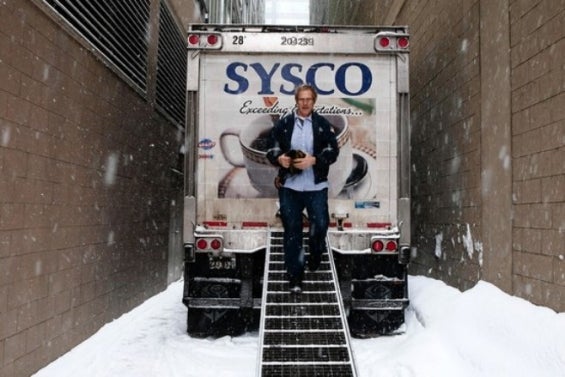Headline News
FTC Considers Challenge to Food Merger

By Brent Kendall and Annie Gasparro
Published in the Wall Street Journal,September 22, 2014
The Federal Trade Commission is considering a possible antitrust lawsuit to block the planned merger of Sysco Corp. and US Foods Inc., concerned that combining the nation’s two biggest food suppliers to restaurants, schools and other institutions could threaten competition, according to people familiar with the matter.
The FTC, which has been investigating the merger for several months, is weighing other alternatives, such as requiring Sysco and US Foods to divest assets to competitors, these people said.
The commission hasn’t yet decided whether to challenge the deal but a decision could come within weeks, these people said. The FTC in recent years has been relatively quiet on challenging mergers. Many big-name deals have landed instead at the Justice Department, which shares antitrust authority. The department last year filed lawsuits challenging major mergers in the airline and beer industries. Both cases ended with settlements before trial that allowed the deals to go forward.
Sysco announced plans in December to buy US Foods for $3.5 billion. Both companies buy food and other supplies like napkins and cutlery in bulk from manufacturers and sell it at a markup to restaurants, cafeterias and other food-service operators.
Sysco and US Foods, which combined would make up more than 25% of the $231 billion U.S. food-distribution industry, say the merger will help them cut costs, boost purchasing power and improve customer service.
But with the next largest competitor at one-fifth the size of the merged firm, some restaurant owners, food manufacturers and other stakeholders are worried the marriage would eliminate an important competitive dynamic in which Sysco and US Foods each serve as a check on the other’s prices.
The companies have said the combined entity will remain subject to intense competition from the rest of the industry, which is largely fragmented among thousands of local and specialty distributors. Sysco also said it expects its market share to erode slightly as rivals poach customers during the integration.
A Sysco spokesman said the investigation remains on track, and the company still expects the merger to be completed by the end of the year. He referred to company comments last month in which Chief Financial Officer Chris Kreidler said Sysco continued to believe the merger “will benefit customers and help us become more efficient in an evolving and competitive marketplace.”
A US Foods spokeswoman didn’t immediately respond to requests for comment.
Sysco expects annual savings of at least $600 million after three-to-four years into the merger, from combining administrative, technology, purchasing and other operations. The company and other traditional distributors have struggled in recent years with declining profit margins, as higher commodity and transportation costs make it tough to beat the low prices of a growing sector of self-service wholesale food stores, such as Costco Wholesale Corp. and Restaurant Depot.
Sysco’s fiscal 2014 earnings fell 6.1% to $932 million as higher costs outweighed revenue growth of 4.7% to $46.5 billion.
Critics of the deal say the national scope of Sysco and US Foods, as well as their range of product offerings, make them different from smaller distributors.
“Sure, there are little produce companies and meat companies that mirror US Foods and Sysco, but in terms of dry and frozen goods, no small distribution firm can compete,” said Brian Shapiro, owner of Shapiro’s Delicatessen in Indianapolis. Large, national restaurant chains like McDonald’s Corp. can always buy directly from manufacturers if they’re unhappy with Sysco or US Foods. “But for small- and medium-sized restaurants, this will mean fewer product choices and higher costs,” he said.
Food manufacturers also have concerns, including a merged firm demanding lower prices and cutting back on the variety of products the two companies independently purchase now. Union representatives and some public-interest groups also have raised objections with the FTC.
“Sysco has a lot of power already. It can dictate terms to some of its biggest suppliers, and it already undercuts the prices of local distributors,” said Mike Callicrate, owner of Ranch Foods Direct, a small meat supplier company in Colorado Springs, Colo. “Buying US Foods would give it the ability to effectively block smaller producers and distributors from getting their products into the market.”
Both the FTC’s bureau of competition and bureau of economics have been looking at the deal. A majority of the agency’s five commissioners must agree upon any course of action. The agency, which has three Democratic commissioners and two Republicans, is known for bipartisan cooperation but the commissioners do sometimes disagree on the agency’s approach.
An FTC spokesman declined to comment.
The Sysco-US Foods merger agreement allows for divestitures up to $2 billion of annual revenue in order to secure regulatory approval. Some critics believe the rivals would need to divest a larger pool of assets to address possible competitive harms.
Among the questions facing the FTC is whether competing food distributors in line to acquire divested assets from Sysco and US Foods would be strong enough to replace any loss of competition from the merger.
The next-largest competitor in the market is Performance Food Group Co. whose operations are focused most heavily in the Southeast and along the Eastern Seaboard. The company could have a lot riding on the FTC’s review, as it is preparing for an initial public offering and could be in line to pick up assets from its larger rivals if the FTC seeks to force divestitures.
PFG expects to raise around $100 million from the IPO. PFG doesn’t say in regulatory filings whether it might use some of those funds to buy parts of the combined Sysco-US Foods, but notes that it has done 12 acquisitions in the past six years and that acquisitions remain a key part of its strategy.
PFG declined to comment on the merger.